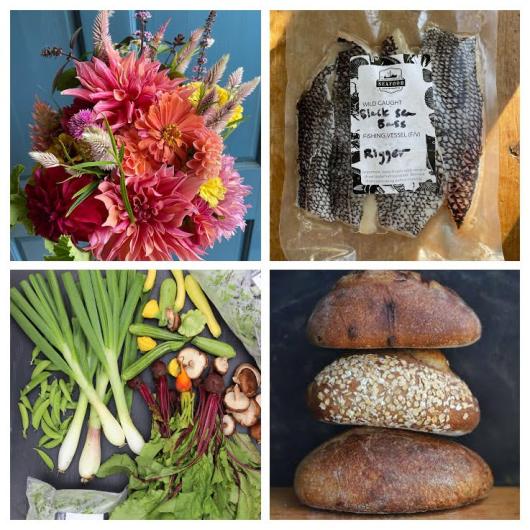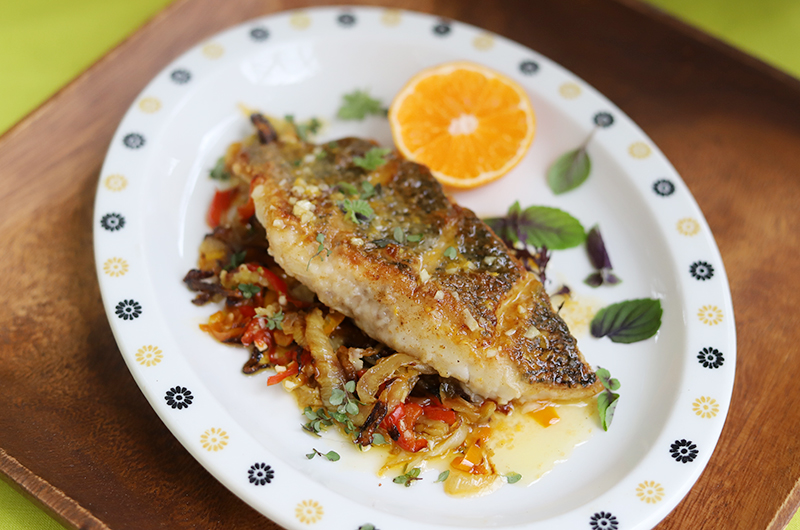Who doesn’t love a grab bag of edible goodies? Okay, maybe not everyone gets as excited as I do about cooking with surprise ingredients. (Secretly, I’ve always wanted to be on Chopped.) But you’ve got to admit, if you’ve ever purchased a Community Supported Agriculture (CSA) share, you certainly stretched your cooking creativity, learned to love some new ingredients, ate more healthily, and perhaps memorized the entire alphabet of cooking greens, from arugula to rapini.
You also probably met farmers, visited a farm or market you might not have otherwise discovered, and felt good about supporting your local food economy.
Which – if you haven’t ever joined one before – is the whole brilliant idea behind a CSA. Farmers accrue the bulk of their expenses in the winter and early spring, from seeds and supplies to infrastructure improvements. But traditionally, they don’t start turning the profit to pay for these expenses until later in the season. By offering community members the opportunity to purchase a share of the farm’s bounty early in the year – or essentially invest in the farm – the farms bring income in when they need it and lengthen the window of income over a longer period of time.
In return, customers are guaranteed a regular supply of produce at peak flavor, as well as specialty items that sometimes are not sold at the farm stands or markets.
The concept of a CSA isn’t new, of course. The earliest ones began in Massachusetts and New Hampshire in the 1980s. Since then, they’ve proliferated around the country. My first full summer on the Island (2009), I joined Andrew Woodruff’s Whippoorwill Farm CSA, which was actually on the grounds of Thimble Farm (now the Island Grown Initiative farm). I loved everything about it – driving out to the farm to collect the goodies, getting a chance to pick flowers and green beans in the field, and even harvesting strawberries and raspberries. That’s where I first met Rusty Gordon, now proprietor of Ghost Island Farm in West Tisbury, who worked with Woodruff and was running the CSA. Members were asked to volunteer to help on distribution days, and I enjoyed getting a chance to do that since I quickly became obsessed with all things farm-related.
For many years after, I didn’t join a CSA because I was growing so many of my own vegetables. But when the pandemic came along, I jumped at the chance to augment what I was growing with a share from North Tabor Farm in Chilmark, which created the CSA just for the situation we were all in that summer of 2020. I picked up my box every Friday morning. In addition to North Tabor’s famous greens and baby squashes, there was a wide range of other vegetables – and always a nice surprise, such as a pint of blueberries or a pint of shiitake mushrooms.
North Tabor has since gotten out of the CSA game (at least for now). But thankfully, there are still plenty of options available on-Island – arguably more than ever. And not all of them are limited to veggies.
Island Grown Initiative (IGI) in Vineyard Haven has two produce-centric options to choose from: a winter CSA that runs biweekly from November through March, and a summer CSA that runs weekly from June to October.
Both of IGI’s CSAs help support the food grown on the farm that is donated to the Island Food Pantry and other Island agencies working on food equity solutions. But the winter CSA also has the added benefit of spreading income into the corners of the year that can be less profitable, and of providing year-round Islanders more access to affordable local food. A share in IGI’s winter CSA this year was $650 for ten pickups, and it included a very generous supply of vegetables for two weeks. Two of my work colleagues belonged, and I stopped by one day to get a peek at the bounty they were getting. I was impressed with the amount and diversity of produce: carrots, leeks, cabbage, squash, onions, potatoes, celery root, beets, Brussels sprouts, baby kale, and eggs.

Morning Glory Farm in Edgartown also offers a CSA, which, like North Tabor Farm, began during the pandemic. Members can sign up for half or full shares for the summer and fall seasons. Prices begin at $290 for a ten-week summer half-share (good for two people). In 2020, they also introduced a flower CSA. Members can buy a five- or ten-week share, with pickups starting July 11 this year, ensuring that they will have a constant supply of fresh flowers. Over on Chappaquiddick, Slip Away Farm has been offering a flower CSA for years.
Meanwhile, Ghost Island Farm, now in its twelfth year, has taken the CSA concept and exploded it to be what is essentially a co-op model, with flowers and produce combined into one offering. You can buy a membership (for $250 or $500) to Ghost Island at any point in the year and begin using your credit immediately on anything in the store. Unlike a traditional CSA, you do not have to buy a specific combination of items on a weekly basis. As a member, you also receive discounts on farm stand items, and you get the opportunity to pick zinnias for free from the flower field during the summer.
For those who can’t live by veggies alone, there are also Community Supported Bakeries (CSB). A few years ago, Grey Barn & Farm in Chilmark started a ten-week winter bread CSB. This year the dates were January 29 to April 1. Keep an eye on it when the time for signing up next year rolls around. Morning Glory Farm runs their bread CSBs from spring through fall, with both half- (ten weeks starting June 24) and full-season (twenty-two weeks starting May 27) options available. Full shares are two loaves of bread and a treat (pastry or cookie); half shares are one loaf and a treat.
But the newest community share program is the one I’m most excited about. It’s a Community Supported Fishery (CSF), the first one of its kind on the Vineyard. The pilot program, planned to be continued this year, was launched last summer by the Martha’s Vineyard Fishermen’s Preservation Trust (MVFPT) and had fifty subscribers. (See mvfishermenspreservationtrust.org for updates this spring.) The goal of the pre-paid CSF was to help secure both an outlet and a stable price for local catch. By helping Island fishermen sell what they’re landing, and giving customers a chance to learn to cook fish that may be less familiar to them, the program is a win for sustainable fisheries.
While the 2023 CSF included popular fish, such as fluke, scallops, yellowfin tuna, and calamari, it also included by-catch and lesser known fish, such as monkfish, tilefish, bonito, and tautog in the monthly shares. And it provided customers with plenty of the fish that’s now the most abundant in Vineyard waters during the summer – black sea bass. All the fish is flash-frozen and vacuum-packed in Menemsha, thanks to a new flash-freezer, which has been a game changer for the MVFPT’s Martha’s Vineyard Seafood Collaborative. Immediately flash-freezing and vacuum-sealing fish preserves its fresh-caught flavor and texture for months.
Last year there were summer and fall offerings, picked up monthly at the West Tisbury Farmers’ Market. A large share included sixteen to twenty servings of locally caught seafood (enough for four people to eat once a week for four to five weeks) and a small share included eight to ten servings (enough for two people to eat once a week for four to five weeks.) The CSF membership included an insulated tote and ice pack for customers to bring to pick up their fish.
I hope more people will get a chance to take advantage of the Island’s CSAs, CSBs, and CSF this year. In anticipation, I’m including a delicious recipe for sear-roasted black sea bass that also makes use of CSA veggies and herbs. Black sea bass is an incredibly tasty fish; it’s a bottom feeder that eats crustaceans, making its flesh sweet and firm. You’ll get the fillets with the tasty skin on; never fear – I’ve given you lots of tips for browning that skin and cooking the fish perfectly.
Now if someone would just bring back pick-your-own strawberries, I’d be happy as a clam.








